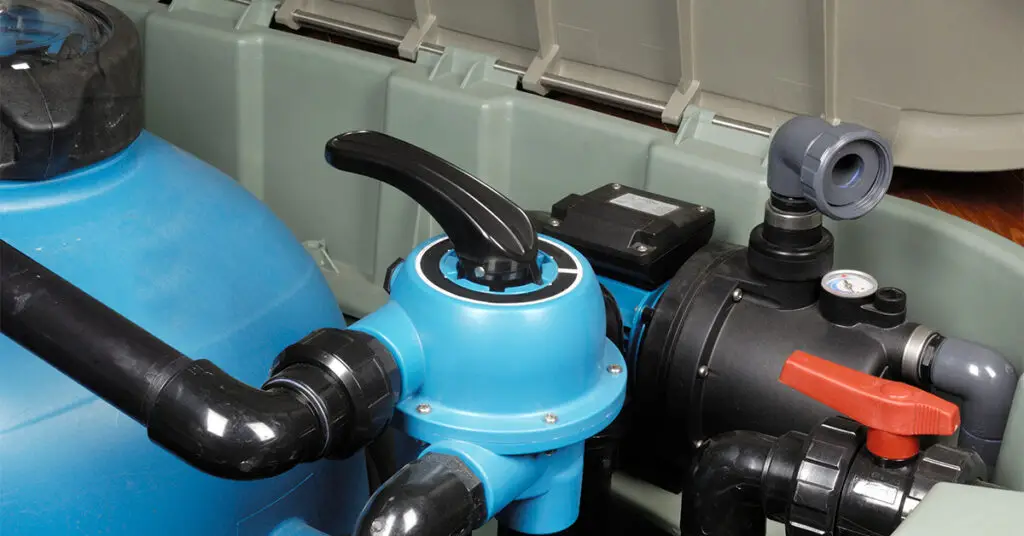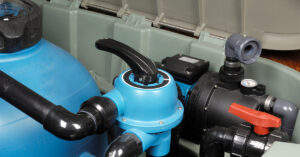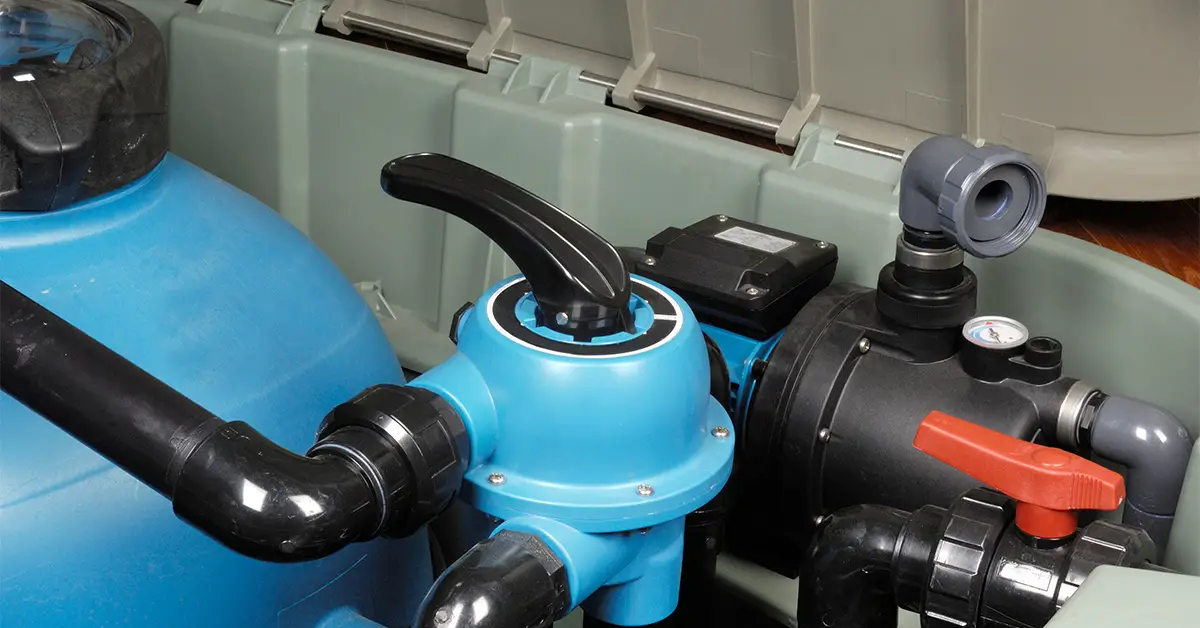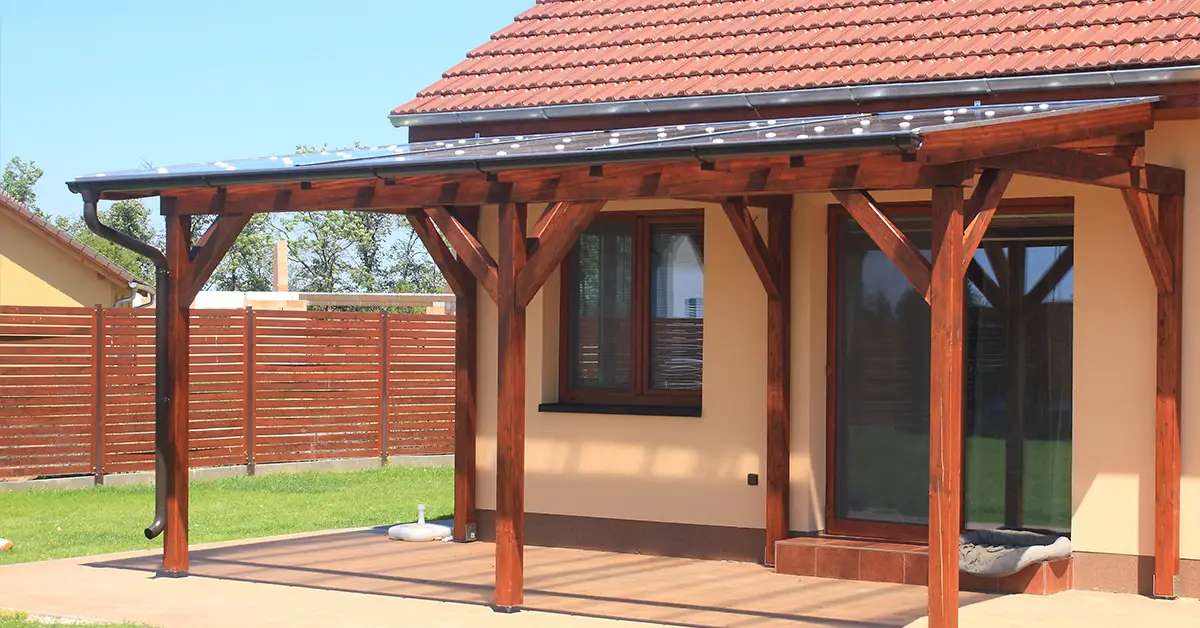To clean your pool’s filter system, you can use backwashing, which involves turning the water flow around. Larger particles accumulate in the filter over time, even though most pool filters aid in removing organic material by forcing water through it with a porous medium, usually sand, and releasing the clean water into the pool. Because of the rise in pressure, your filter may lose efficiency or be damaged.
Not all pools have backwash like the Cartridge pool filters are not designed to be backwashed and require manual cleaning. Because they were not designed to function with reverse water flow, cartridges filters cannot be backwashed merely by switching the direction in which the water flows through the filtration system of a swimming pool.
What Happens If You Don’t Backwash Your Pool?
A pool with a lot of dirt, debris, and other impurities will need to be washed regularly to keep it looking clean. Pools are susceptible to regular dirt due to nearby birds, trees, and building sites, so backwashing them three times a week is reasonable.
Failure to backwash your pool the following will happen:
- The pool water will turn cloudy and unclean.
- The water will get contaminated with harmful algae and bacteria.
- If your pool filter becomes clogged, you’ll have to change it more frequently.
- It will cost you more in the long run since your pool motor must work much harder to pump the water.
- An unpleasant odor will develop in your pool.
- A pool’s liner might corrode from the acidic water.
- You might expect discoloration and staining of your edge of the pool and other surfaces near the pool.
- Your pool’s machinery won’t last as long.
- The pool may become a breeding ground for bugs and other unwanted guests.
- You might expect a significant drop in pool satisfaction.
How Often Should I Backwash My Pool?
Some pool owners make the typical mistake of backwashing too often, even though necessary. Make sure only to backwash your swimming pool when necessary. A high volume of backwashing might lead to a significant loss of water. End back and the pool as soon as it turns clear. Backwashing your pool more often may be necessary if debris like leaves, grass clippings, and other yard trimmings find their way in.
If the pool is not cleaned regularly, debris will end up in the water and damage the filtering system. Keep your pool clean and debris-free by backwashing it regularly. Pool size, filter type, and usage affect how often you need to backwash. The typical frequency of backwashing a pool is every 14 days.
How Often To Backwash The Pool With Algae?
In general, you should backwash your pool approximately once per week or when you do your regular maintenance. The pressure gauge on your filter is another rule of thumb for when to backwash. You may need to backwash your filter several times to eliminate algae or other debris that clogged the system.
Backwashing your pool often is normal when you need to get rid of algae in green pool water. Remember that backwashing your pool often will not hurt it. Use a pool brush to scrub the algae-covered surfaces very hard. To get rid of the dead algae, use a vacuum or backwash the pool.
You can quickly get rid of algae by brushing and vacuuming your pool, balancing the chemicals in your pool’s water, and then shocking and filtering the water. Just make sure you clean all the surfaces of your pool well. If you leave even a small number of algae spores behind, they will grow and blossoms again quickly.
How Often Do You Backwash A Pool Sand Filter?
Keep it in mind after a major storm or if there’s a sudden breakout of algae. A diatomaceous earth filter system requires six or more maintenance cleanings per year. Backwash your sand filter once a month and take it apart for cleaning at least twice a year. When the hose is full, backwash your sand filter for at least three minutes, preferably longer.
The pump motor can be turned off by returning the T-handle to its locked position. Restarting the pump reveals a pressure drop. Every three to five years, the sand should be replenished. For a clear pool, this may be much longer; if the filter is constantly operating, the duration could be much shorter.
Over time, the sand’s rough edges soften out, and the sand becomes more uniform in texture. The performance of a sand filter in a swimming pool might be significantly impacted if too much sand is added to the filter tank. Excessively sand inside the filter could cause damage to some of the parts when they are reassembled.
How Often Should I Backwash My Above-Ground Pool?
At least once a week, you should vacuum and brush the pool’s walls and floor. If you use your pool more frequently or if nearby trees, bushes, and other vegetation shed branches, leaves, and other waste into the water, you may need to increase the frequency with which you clean it. Even though robotic pool cleaners are fantastic and can save you a lot of time, you should still brush your pool regularly.
It would help if you backwashed your pool once a week before performing any scheduled maintenance. The standard practice also calls for backwashing when the pressure gauge on your filter reaches 8-10 pounds per square inch above the set point. Assuming the sight glass is at the top of the filter, turn on the pump and let the sand filter backwash for two to three minutes.
How Often Should You Backwash Your In-Ground Pool?
The most common construction materials for in-ground pools are cement, stone, metal, plastics, and fiberglass. Most in-ground pools are custom created to order, although some standard sizes are available, with the Olympic size being the largest. You are backwashing the pool once a week or whenever another normal maintenance is carried out is recommended if you want to maintain the water in your pool clean and healthy.
The standard suggestion about how often a filter should be backwashed is as follows: You must backwash your pool at least once per week and always do so before completing any regularly planned maintenance. When the pressure indication on your filter hits a certain level, it is also usual practice to backwash the system.
How Often Backwash The Pool Pump?
For optimal filtering and water flow in your pool, as well as to extend the life of your cartridges, we advise cleaning them every three months.
Removing and cleaning the pool pump when it becomes dirty is necessary. Use a solution of mild soap and water to clean the pump housing. Brush off the impeller and filter. Replace the pump’s parts and put them back in the water. The typical lifespan of a pool pump is between eight and twelve years.
Your pool’s components will inevitably start to wear down after some time. Not to mention, pool technology has advanced greatly during the past decade. Two possible causes of a pool pump overheating are issues and friction. We will go into detail about how electrical issues are far and away the most prevalent cause of pump overheating, but a friction fire can also start if a pump isn’t getting enough water.
How Often Should You Backwash A Commercial Pool?
When the filter pressure in a commercial pool increases by more than ten pounds per square inch above its clean start-up pressure, or when the filter media becomes visibly dirty, the pool should be backwashed. Backwashing is a method of cleaning swimming pools that involves removing debris and impurities from the water by using the pump and a hose linked to the drain. Water pressure is reduced, and filtration efficiency is increased when filter media is kept clean. Put the pool pump to sleep.
Make that the filter faucet handle is locked in the Backwash position.
If the water in the view glass, which should be positioned on the filter, is cloudy, backwash the system for an additional minute or two. Rinse the filter thoroughly for a minute or two until the water in the glass is clear. You must turn off any electric heaters.
How Often Should You Backwash Saltwater?
The standard recommendation for cleaning a pool is to backwash it once a week or as part of your regular maintenance routine. Turn the valve to the filter position and backwash the tank for five minutes after closing it. As a rule of thumb, a pool requires a backwash if the pressure sensor on the filter reads 8-10PSI at the beginning and then operates smoothly at 16PSI before rising to 25PSI.
Every three to five years is about right for replacing the sand. This could be longer or shorter depending on how long the pool remains clear and how often you run the filter. As sand accumulates over time, its ragged edges soften out.
Conclusion
Backwashing a pool filter can have several positive effects, including an improvement in the water quality, a reduction in the number of chemicals used, and a longer life for the filter. Even though backwashing requires water consumption, it is an extremely important component of pool upkeep because the benefits far exceed the expenditures.







